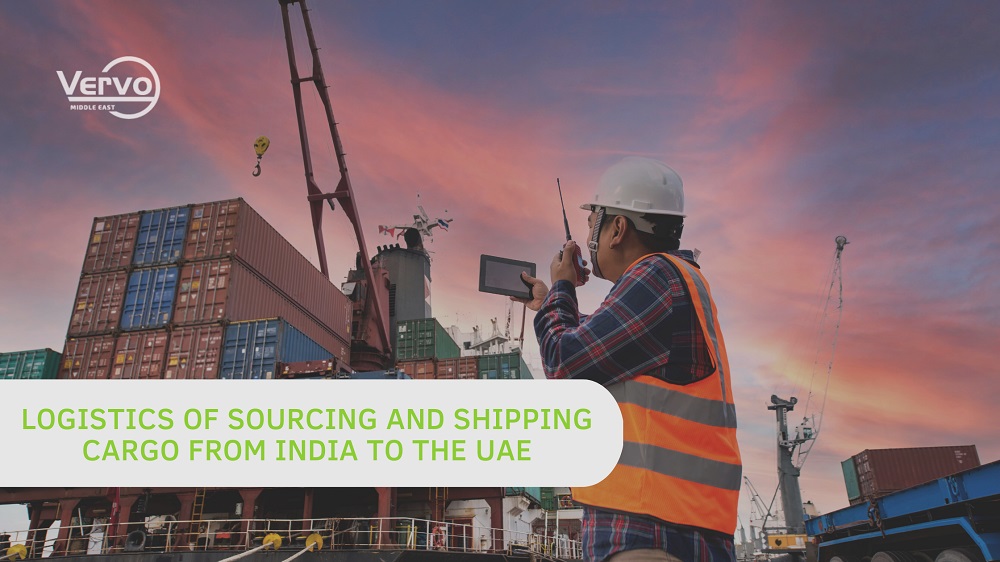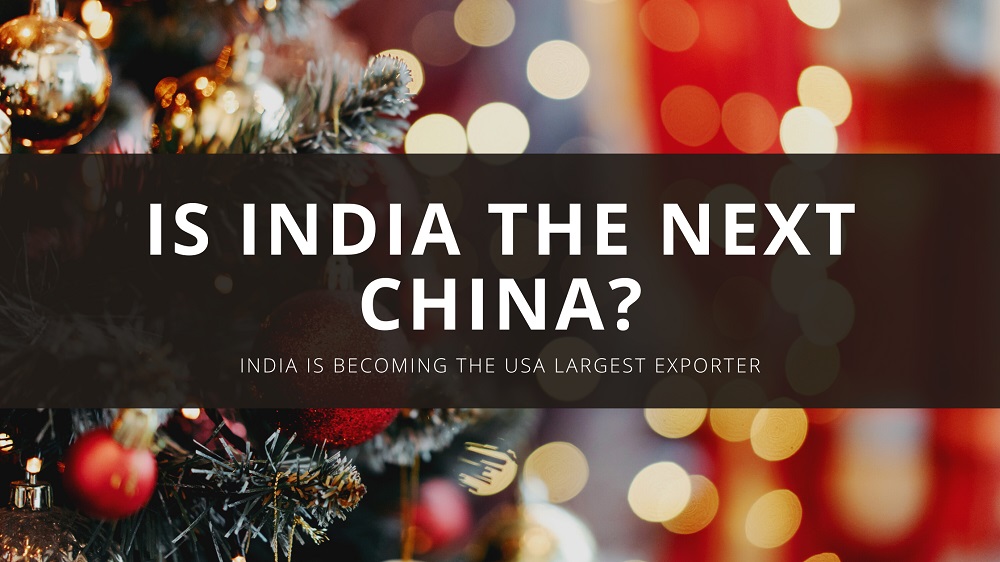Sourcing goods from India offers a plethora of opportunities to access cost-effective products. Finding ways to further reduce shipping expenses while maintaining efficiency and reliability requires strategic decision-making. Whether you're a small business owner seeking to minimize expenses or an individual looking to save costs on shipping personal items, the challenges that arise in this endeavor can be daunting.
In this all-inclusive guide, we'll explore the best practices and insider tips on maximizing cost-effectiveness, ensuring that your precious cargo reaches its destination in the United Arab Emirates without breaking the bank.
As the global landscape shifts in the wake of China's zero-Covid policies, India is emerging as a trade powerhouse that might replace the world's largest exporter. With the thriving trade relationship between India and the UAE, which grew to 84.5 USD billion from April 2022 to March 2023, thanks to the free trade agreement between the UAE and India, it's crucial for businesses and individuals alike to navigate the complex world of shipping with confidence
#1 Get Competitive Shipping Quotes
Obtaining multiple shipping quotes from different companies is essential for finding the most cost-effective option. Shipping costs can vary significantly between providers, depending on factors such as destination, shipping method (air freight, sea shipping, or multimodal), cargo size and weight, and additional services required. By requesting quotes from various shipping companies, you can compare prices and services to identify the most competitive shipping quotes. It's important to consider not only the price but also the reputation, reliability, and track record of the shipping companies. By conducting thorough research and obtaining competitive quotes, you can make an informed decision that saves you money while ensuring a high-quality shipping service. You can get your free cargo shipping quote!
#2 Familiarize Yourself With Incoterms:
Understanding the various Incoterms (International Commercial Terms) is crucial for negotiating the best shipping terms for your cargo when shipping from India to the UAE. Incoterms are internationally recognized rules that define the responsibilities and obligations of buyers and sellers in international trade transactions. They specify who is responsible for the transportation costs, insurance, customs clearance, and other aspects of the shipping process. The Incoterms 2020 is the most recent version, and the following are commonly used in UAE-India shipping: EXW (Ex Works), FCA (Free Carrier), CPT (Carriage Paid To), CIP (Carriage and Insurance Paid To), DAP (Delivered at Place), DPU (Delivered at Place Unloaded), DDP (Delivered Duty Paid), FAS (Free Alongside Ship), FOB (Free on Board), CFR (Cost and Freight), and CIF (Cost, Insurance, and Freight). By familiarizing yourself with the different Incoterms, you can choose t
he most suitable term for your specific shipping needs. This knowledge enables you to negotiate better shipping terms with your suppliers or buyers and ensure that you have a clear understanding of the associated costs and responsibilities involved in the shipping process.
#3 Leverage Off-Peak Shipping Periods For India-UAE Shipments:
Emiri shippers can optimize their shipping costs by taking advantage of off-peak shipping periods when carriers may offer discounted rates due to lower demand. Scheduling India-UAE shipments during these periods or weekdays can lead to significant cost savings while still ensuring timely delivery. During off-peak periods, carriers may have more available space on vessels or trucks, allowing them to offer more competitive rates. Here are some insider tips to help you leverage off-peak shipping periods when transporting cargo between India and the United Arab Emirates:
- Identify non-peak seasons: Research and identify the non-peak seasons for shipping in both India and the United Arab Emirates. For instance, shipping demand in India might be lower during the monsoon season (June to September), while the UAE could experience a dip in demand during the hot summer months (May to September). Plan your shipments accordingly to benefit from lower costs.
- Ship on weekdays: Carriers often have more available space on vessels or trucks during weekdays, as opposed to weekends, when demand tends to be higher. By scheduling your shipments on weekdays, you can take advantage of potentially lower rates and optimize your shipping costs.
- Book in advance: Booking your shipment well in advance during off-peak periods can help you secure better pricing from carriers. This not only enables you to take advantage of lower rates but also ensures the availability of space for your cargo.
- Negotiate with carriers: During off-peak periods, carriers may be more open to negotiating rates due to lower demand. Make use of this opportunity to secure the best possible rates for your shipments.
- Stay informed about market trends: Keep track of the global shipping market and regional factors that may impact shipping rates between India and the United Arab Emirates. Staying informed about market trends can help you anticipate off-peak periods and plan your shipments accordingly.
By coordinating your shipping schedule to align with off-peak periods and employing these insider tips, you can optimize your shipping costs and secure better pricing for cargo shipping from India to the United Arab Emirates.
#4 Efficient Packaging and Cargo Dimensions for India-UAE Shipping:
Efficient packing of your cargo can greatly reduce shipping costs when transporting goods between India and the United Arab Emirates. By choosing the right packaging materials and optimizing the dimensions of your cargo, you can minimize wasted space and avoid paying for unnecessary container capacity, ultimately saving on shipping costs. To maximize the efficiency of your cargo space and packaging, consider these insider tips:
- Use standardized pallets or crates: Opt for pallets or crates that conform to international standards, such as ISPM-15 for wooden pallets. This can ensure compatibility with handling equipment and minimize empty spaces in containers.
- Optimize container utilization: Depending on the size and nature of your cargo, consider using different container types, such as 20-foot, 40-foot, or 40-foot high cube containers. Select the appropriate container size to optimize space utilization without under or over-estimating your cargo's volume.
- Consolidate shipments: For smaller shipments, consider consolidating your cargo with other shippers. This can help to share the costs of container space, resulting in reduced shipping costs. This approach is particularly beneficial for small and medium-sized businesses or individuals with smaller shipments. It allows you to access more competitive shipping rates and optimize your overall shipping costs.
- Opt for LCL (Less than Container Load) shipping: If your cargo doesn't fill an entire container, consider LCL shipping. LCL shipping allows multiple consignments to share a single container, thus lowering individual shipping costs.
- Accurately measure cargo dimensions and weight: Providing precise measurements and weight of your cargo to the carrier ensures accurate pricing and helps avoid unexpected surcharges due to discrepancies.
- Consider the destination's warehousing and handling costs: Be mindful of the warehousing and handling costs at the destination, as these can influence the total shipping costs. Opt for packaging materials and designs that simplify handling and storage in the United Arab Emirates.
By implementing these practices, you will optimize cargo packaging and dimensions, resulting in significant savings on you India-UAE shipping costs when transporting goods from India to the United Arab Emirates.
#5 Optimizing the Shipping Route for India-Emirates Shipments:
One often overlooked aspect of cost optimization is thoroughly assessing the shipping route. When shipping cargo from India to the United Arab Emirates, it's crucial to evaluate different shipping routes and transit times to identify the most cost-effective path for your cargo. Sometimes, a slightly longer route with fewer stops or transshipments can result in lower overall costs and reduced handling risks. Analyzing various options and considering factors such as distance, transit times, port or airport congestion, and potential customs clearance delays can help you optimize your shipping costs. Collaborating with an experienced freight forwarder or logistics provider can provide valuable insights and expertise for optimizing your shipping route.
For maritime shipping, consider using major Indian ports such as Mundra Port in Gujarat, Nhava Sheva (Jawaharlal Nehru Port) in Maharashtra, or Chennai Port in Tamil Nadu. These ports provide efficient connections to the United Arab Emirates, specifically to the Jebel Ali Port in Dubai and the Khalifa Port in Abu Dhabi. By selecting direct routes with fewer transshipments, you can reduce overall costs and handling risks.
When it comes to air freight, major Indian airports like Indira Gandhi International Airport in Delhi, Chhatrapati Shivaji Maharaj International Airport in Mumbai, and Kempegowda International Airport in Bengaluru offer multiple flights to the United Arab Emirates. Favorable routes could include flights with fewer layovers, ideally connecting to Dubai International Airport or Abu Dhabi International Airport in the Emirates.
As an experienced freight forwarder and logistics provider, Vervo Middle East provides you with valuable insights and expertise for optimizing your India-Emirates shipment route. Our freight specialists help you navigate the complexities of international shipping and ensure that your cargo reaches its destination on time and at the lowest possible cost.
How Vervo Middle East Manage Supplychains From India To The UAE
Amidst the rapidly evolving landscape of global trade and the establishment of a groundbreaking free trade agreement between India and the UAE, the surge in cargo shipping between these two nations has reached unprecedented heights, unlocking a wealth of new opportunities for businesses and individuals alike.
At Vervo Middle East, we offer one point of contact to assist you in navigating the complexities of UAE- India shipping and optimizing your costs. Our experienced team provides personalized guidance and helps you identify the most cost-effective solutions for your specific cargo requirements.
By actively engaging with our logistics team, we help you adapt your shipping strategies and leverage cost-saving opportunities as they arise. Our team always discusses potential cost-saving measures and keeps you updated every step of the way.
Vervo Middle East is a reliable logistics partner with over 8,000 clients and partners. Head to Vervo Group’s reviews and case studies to get a full picture of how we can help you import cargo from India to the UAE. At Vervo Middle East, we serve over 120 countries and have performed +109000 global cargoes. Wherever your destination or cargo size, we deliver everything. Our wide range of logistics services in the UAE includes warehousing, cargo tracking , cargo insurance, customs brokerage, specialized deliveries, and container shipping. The Vervo Group has served business communities across Europe and the Middle East since 2008. We serve various industries, from electronics and fashion to healthcare and retail. Our industry-based logistics team delivers all types of cargo: frozen and chilled cargo, heavy-lift shipments, dangerous goods, cars and vehicles, bulk goods, and more! Get your free UAE-India shipping quote today; our logistics team will plan everything from A to Z. Reach out to the logistics manager today via
Follow Vervo Middle East to stay updated on industry news, market conditions, and regulatory changes that may impact shipping costs!



